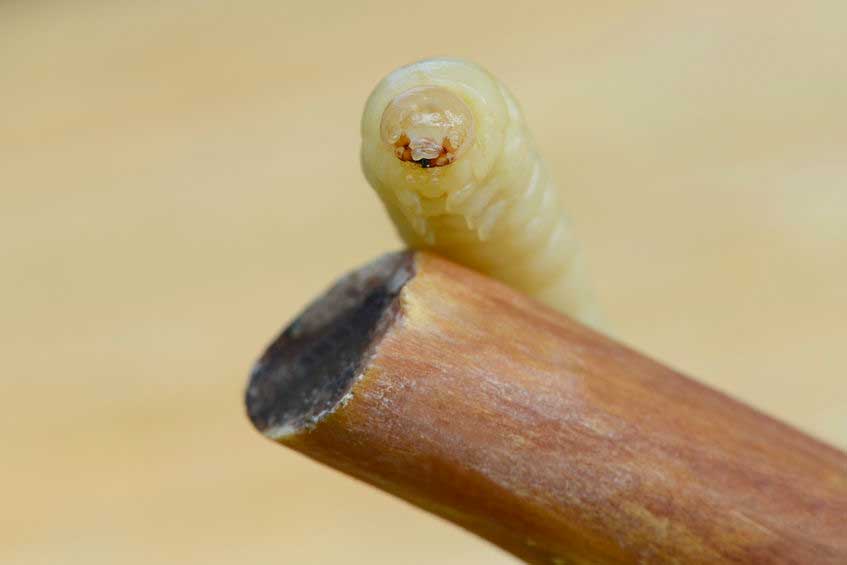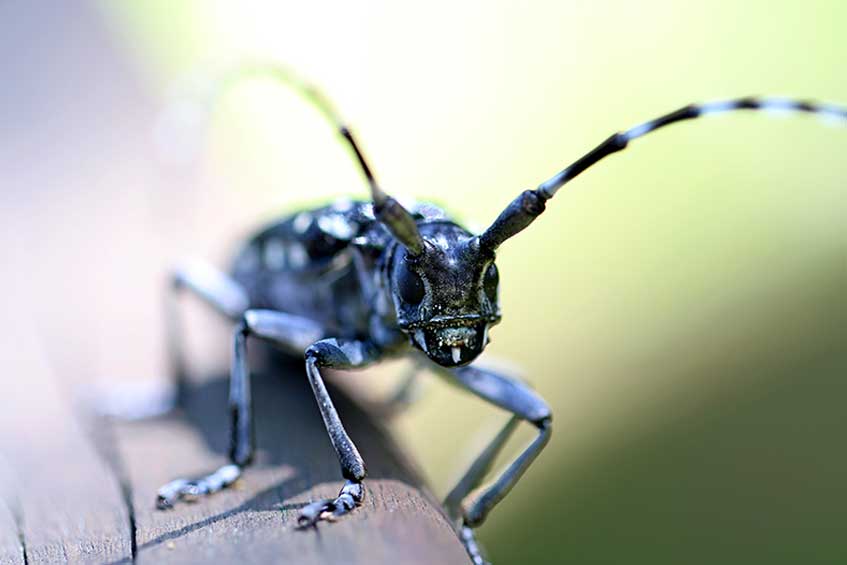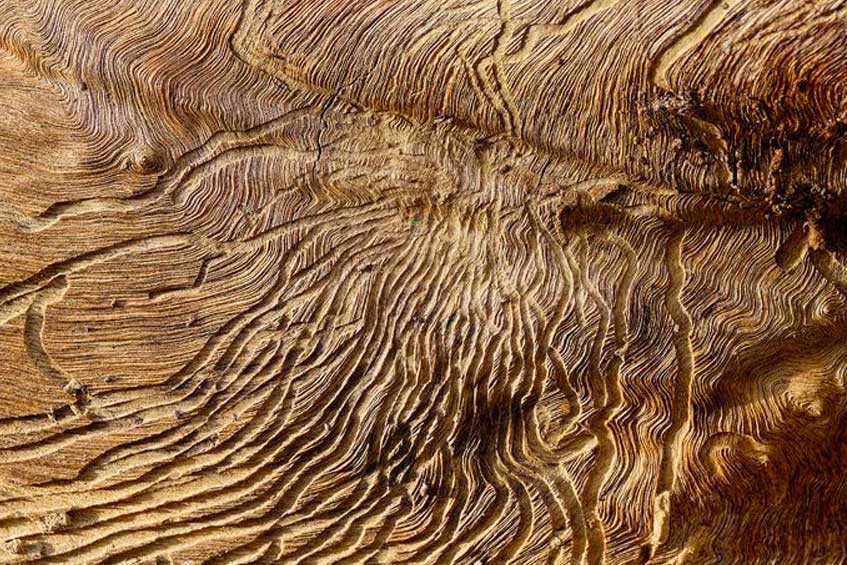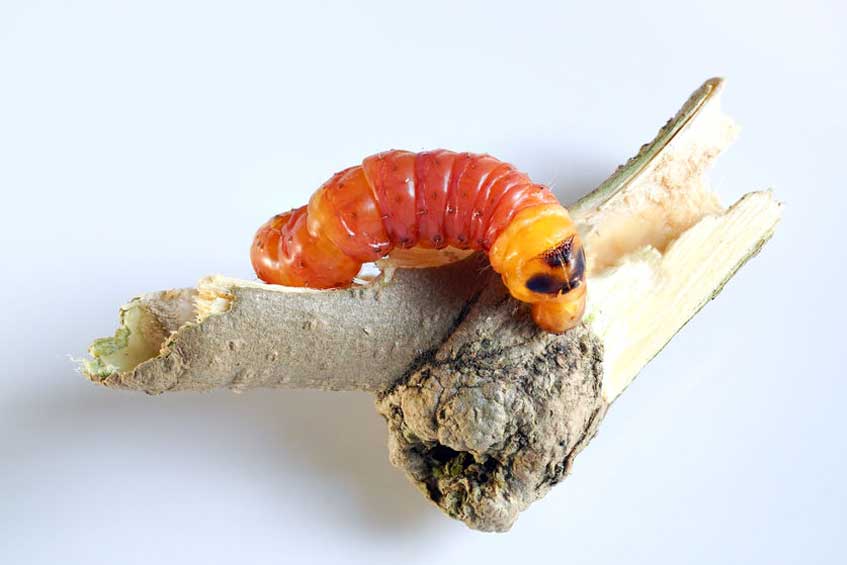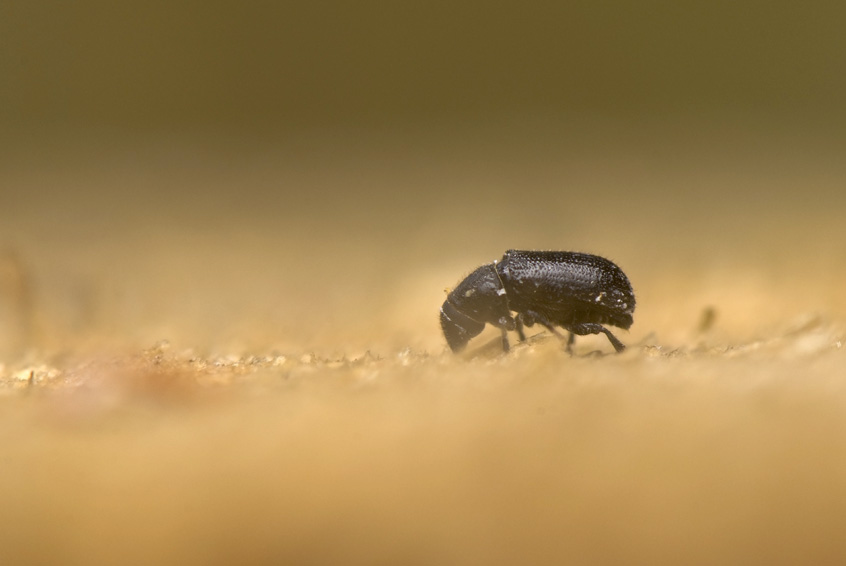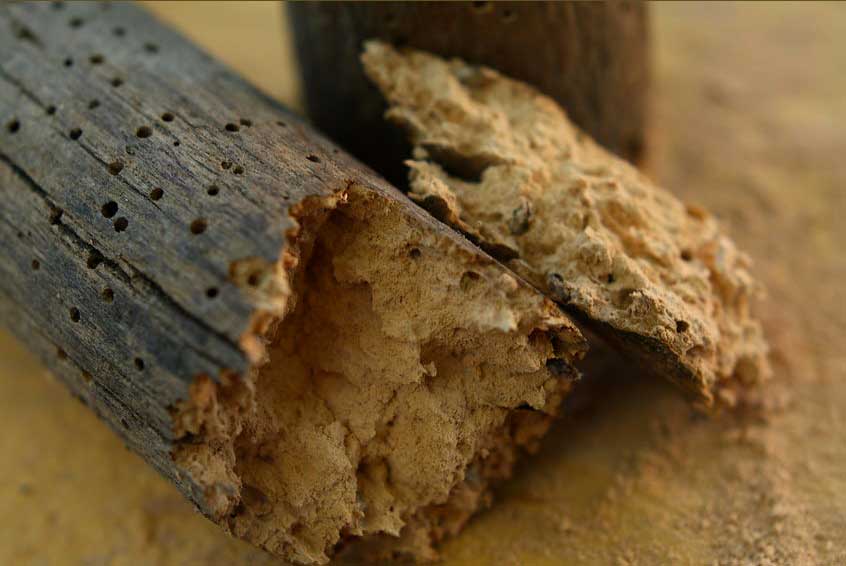TIMPEST HAS THE KNOWLEDGE AND EXPERIENCE TO FIGHT WOODBORERS
POINT BY POINT
- They belong to the beetle family.
- They are much more aggressive and harmful than other insects that are threatening to wood.
- Wood has everything that wood borers need to survive and reproduce: vitamins, proteins and water.
- Favourable conditions are: abandonment, neglect, humidity, darkness, and the warmth from heating systems that eliminates the dormant period.
- Their development is fast: the female lays the eggs, which once hatched, become larvae. The larvae start to feed right away by digging the tunnels.
- Near the surface they undergo another transformation, and once having breached the wood they flutter away and eventually die.
- When they feed they are grubs and when they evolve to the adult stage they have a rigid body that protects their wings.
- It is the adult insect that bores the wood. Every hole indicates a woodborer that has exited the wood
- When the wood borers erode the wood they are silent.
- Some wood borers are more dangerous than others due to their dimensions: the holes on the surface can exceed 1 cm in diameter.
- Some are especially damaging because their life cycle can last more than 10 years. On the surface furniture and beams may appear sound, but underneath the surface they become entirely eroded.
- The ticking sound made by the wood borers is produced by the insects tapping their rigid body against the tunnels: it is their mating call.
